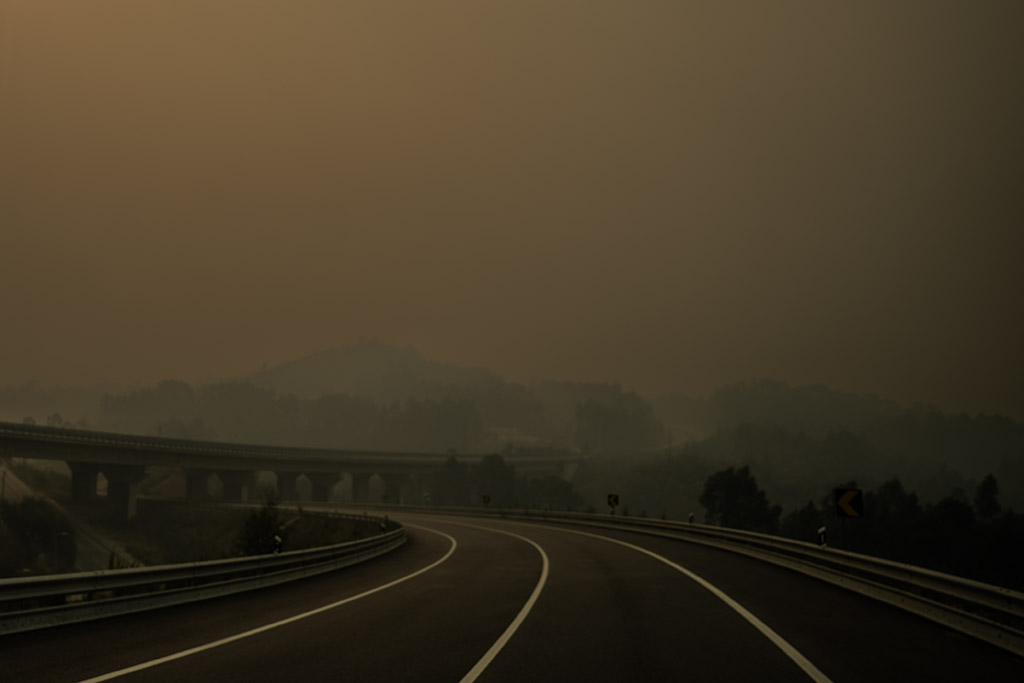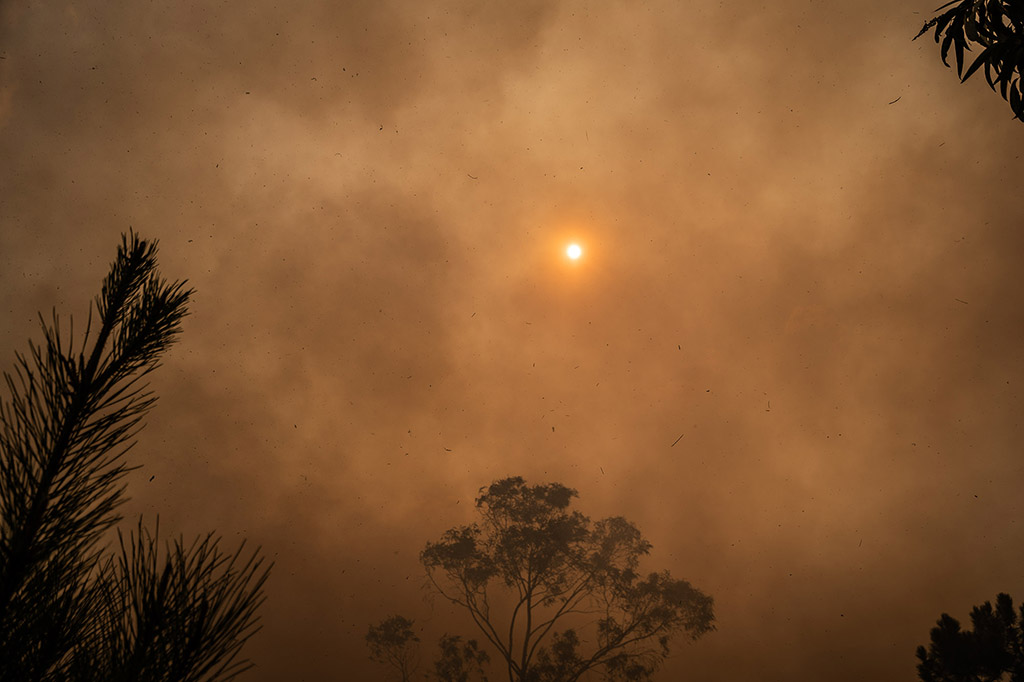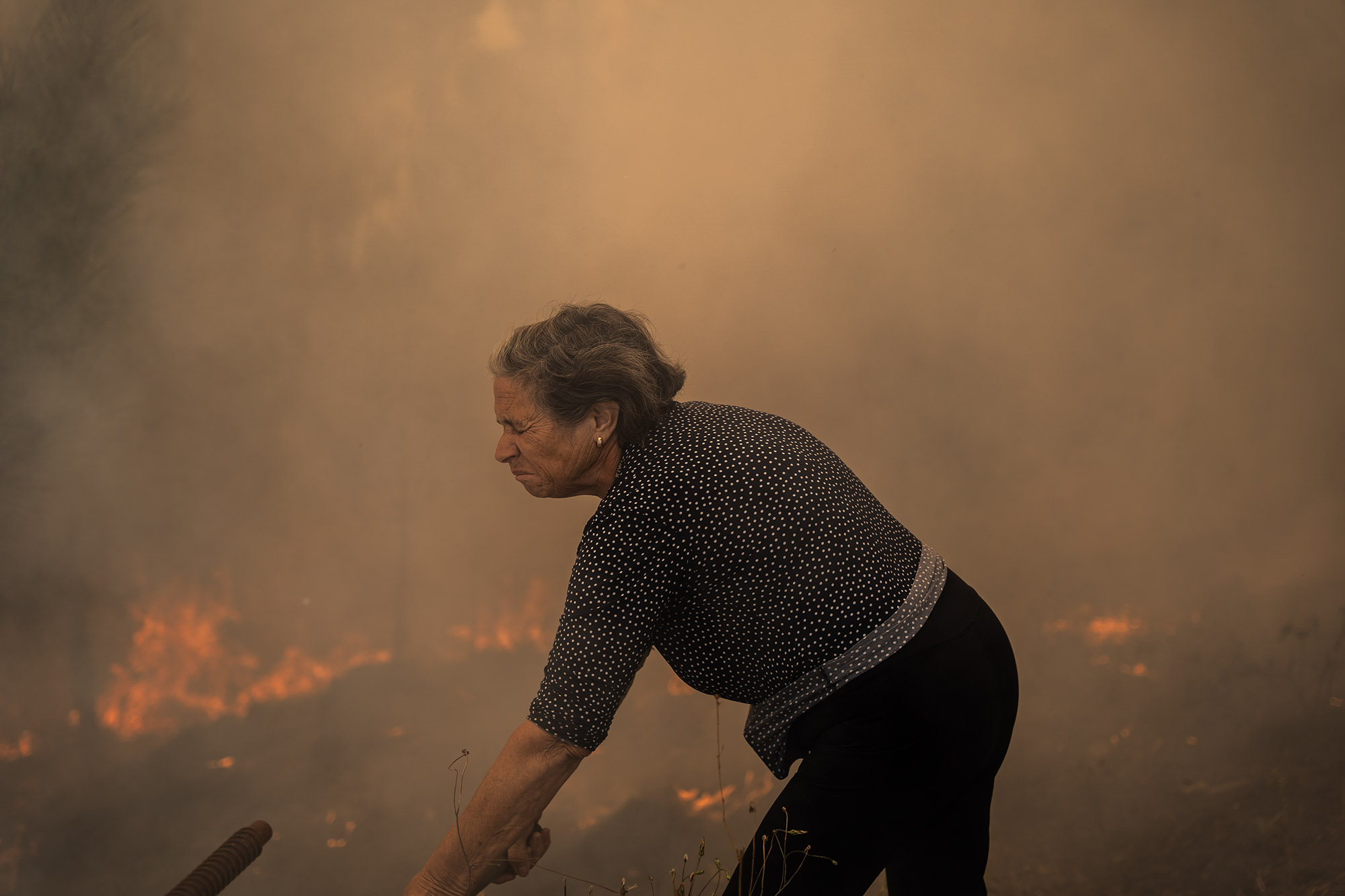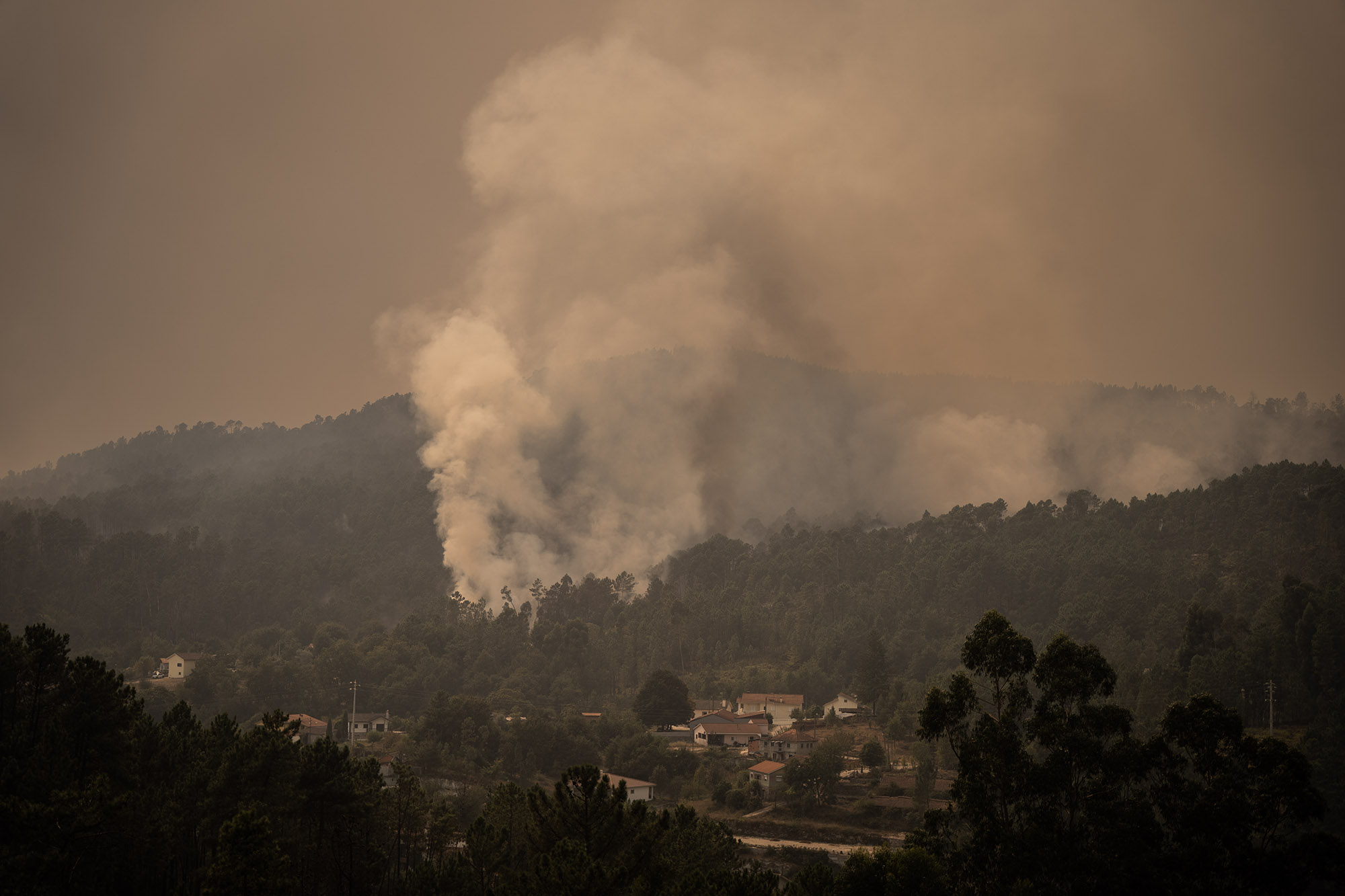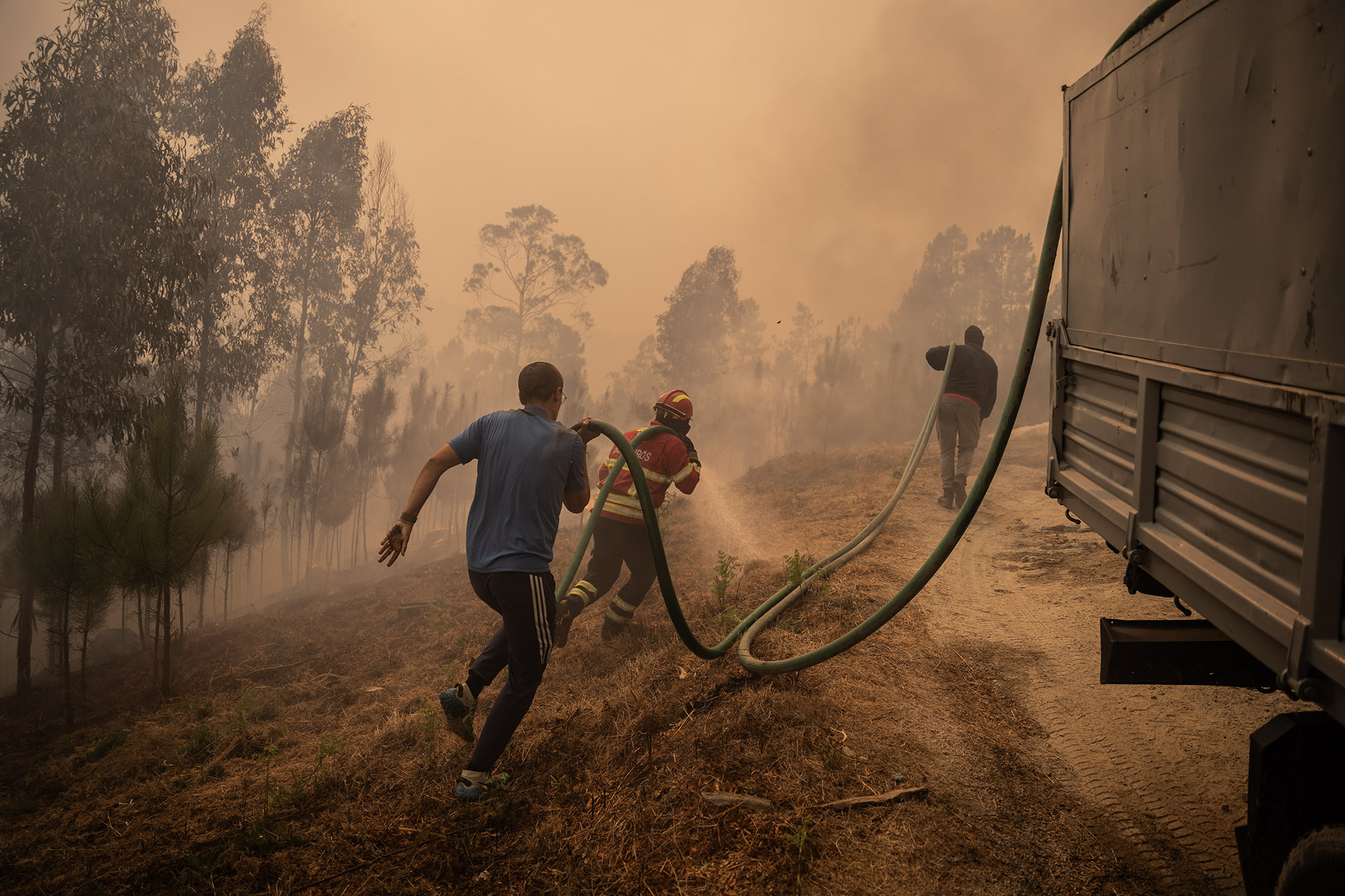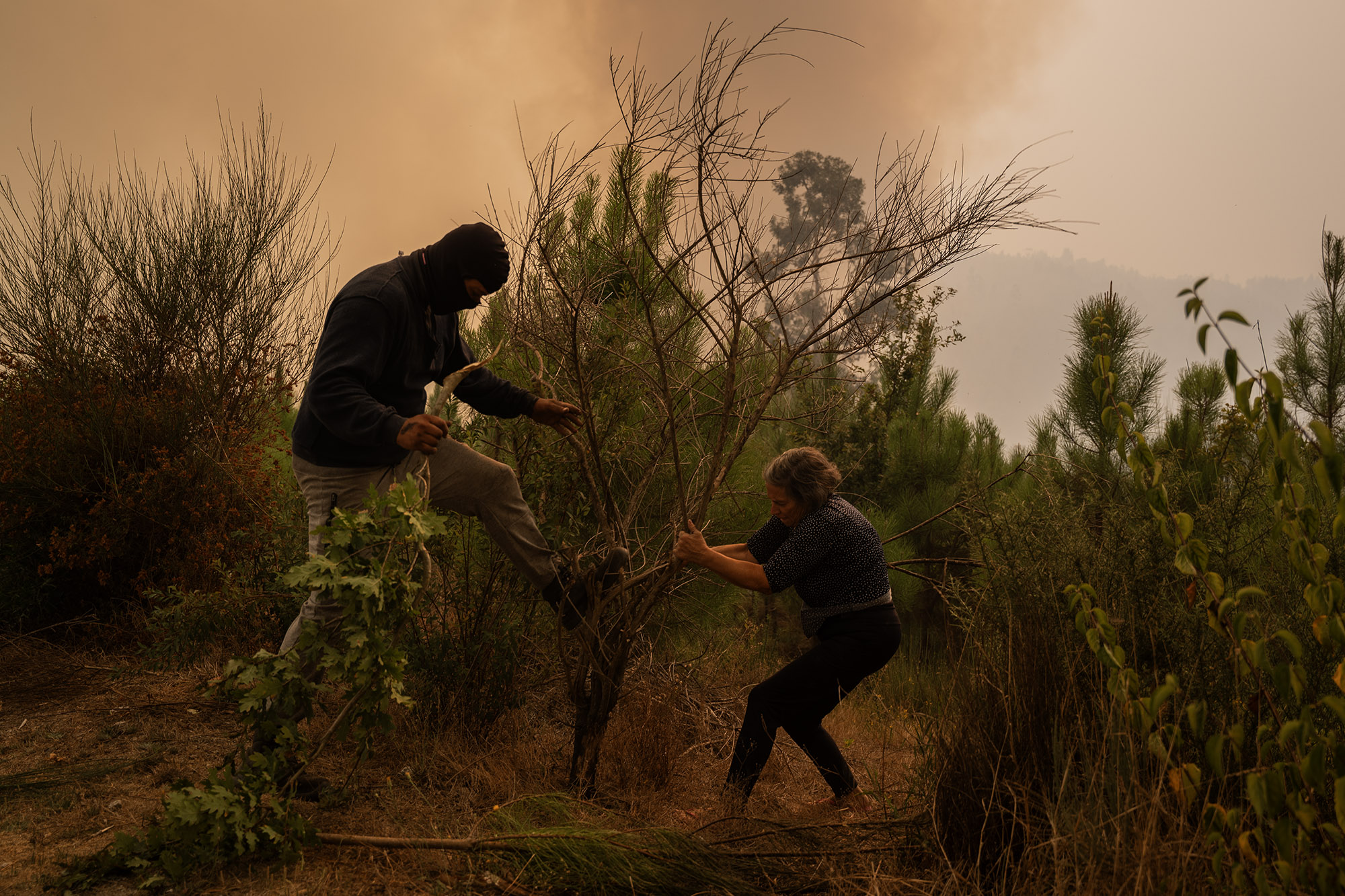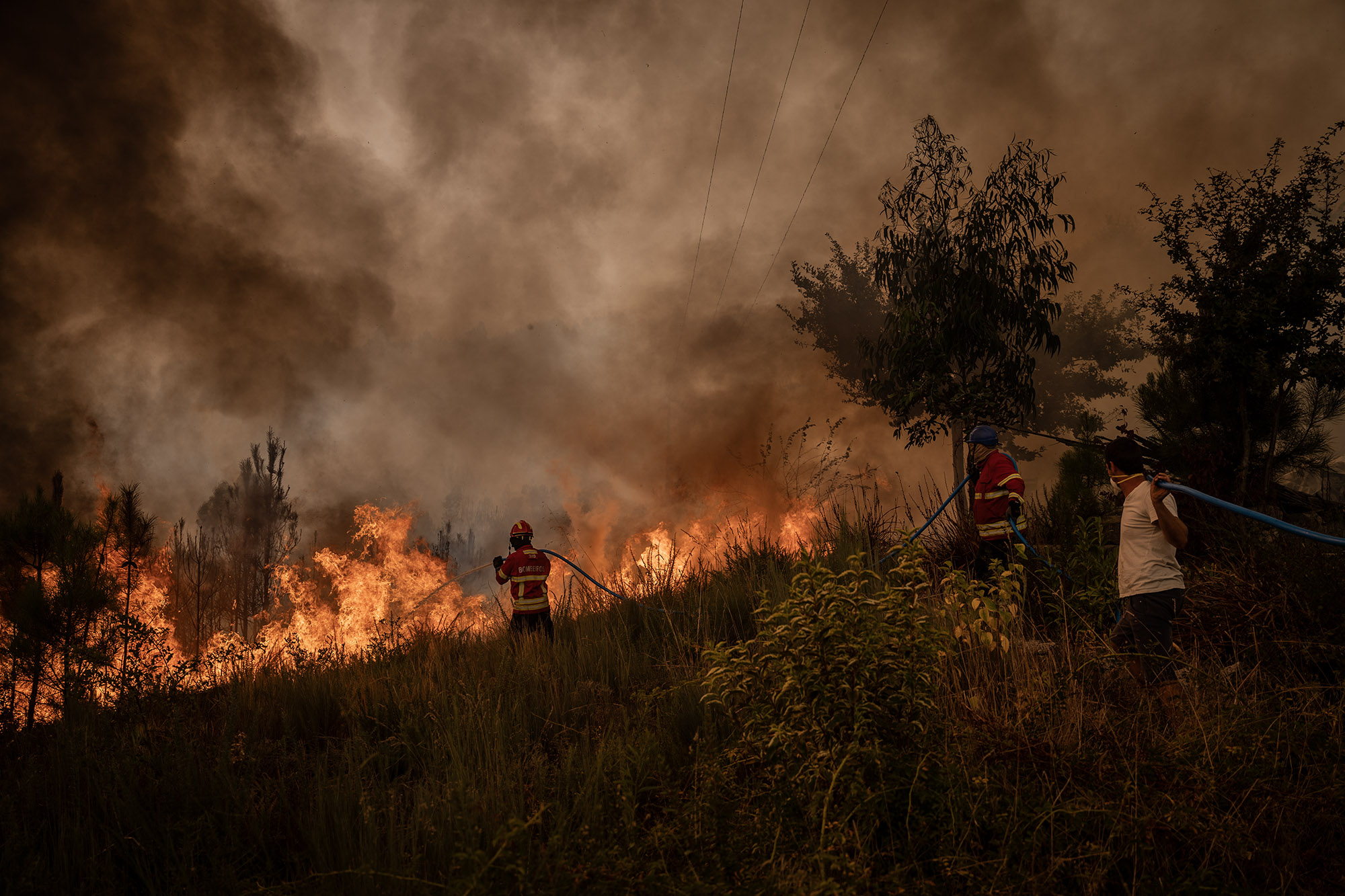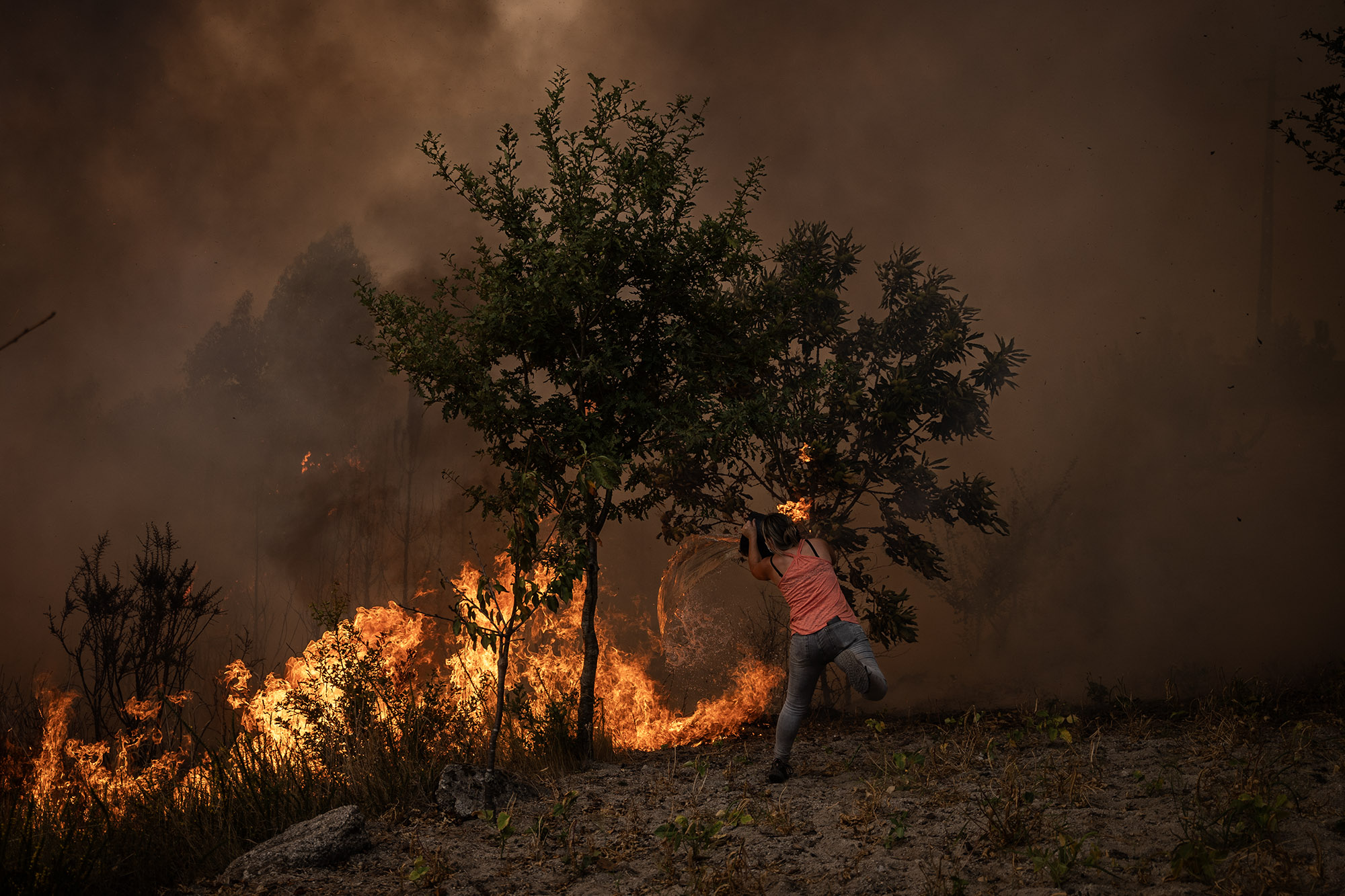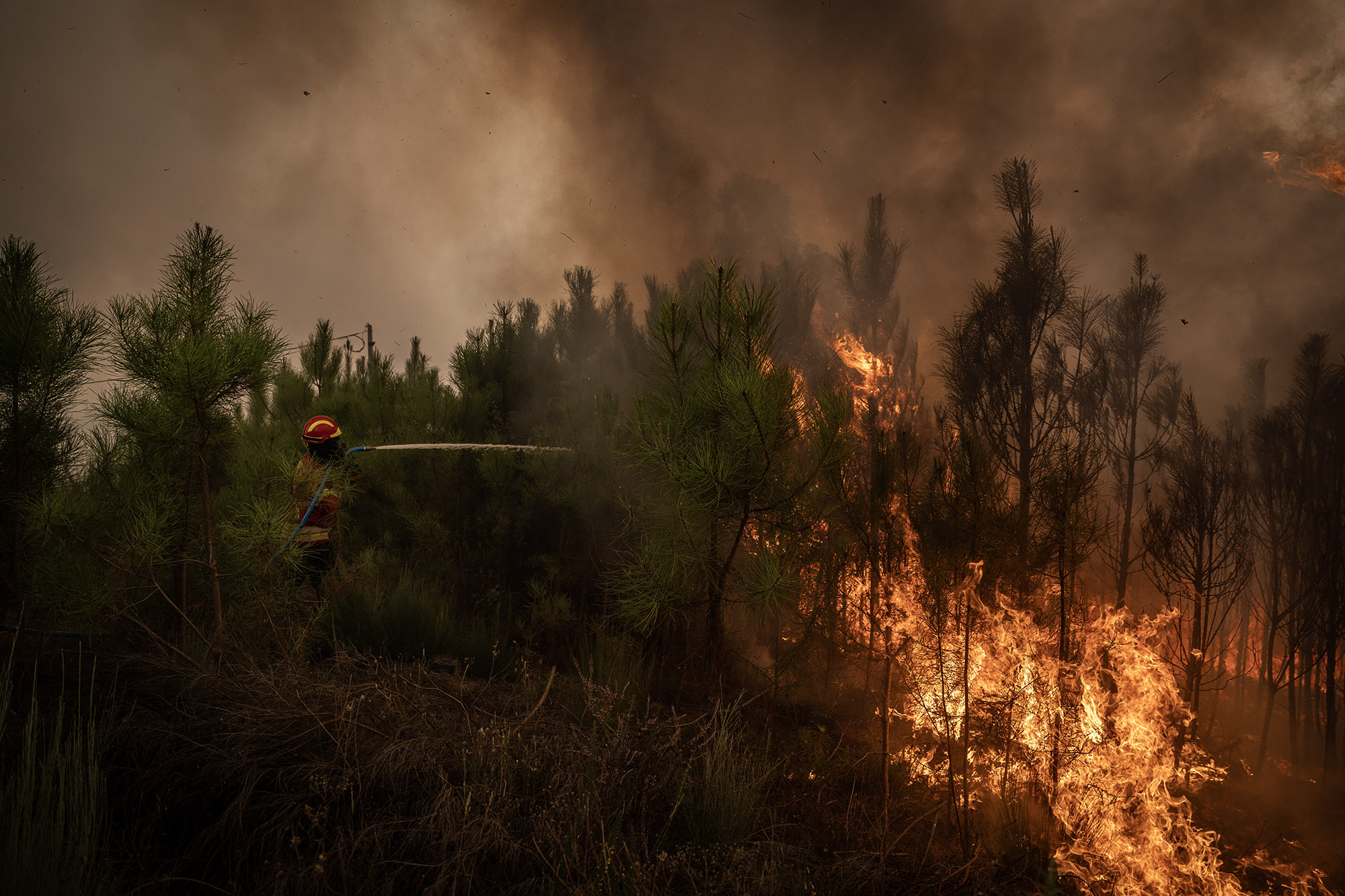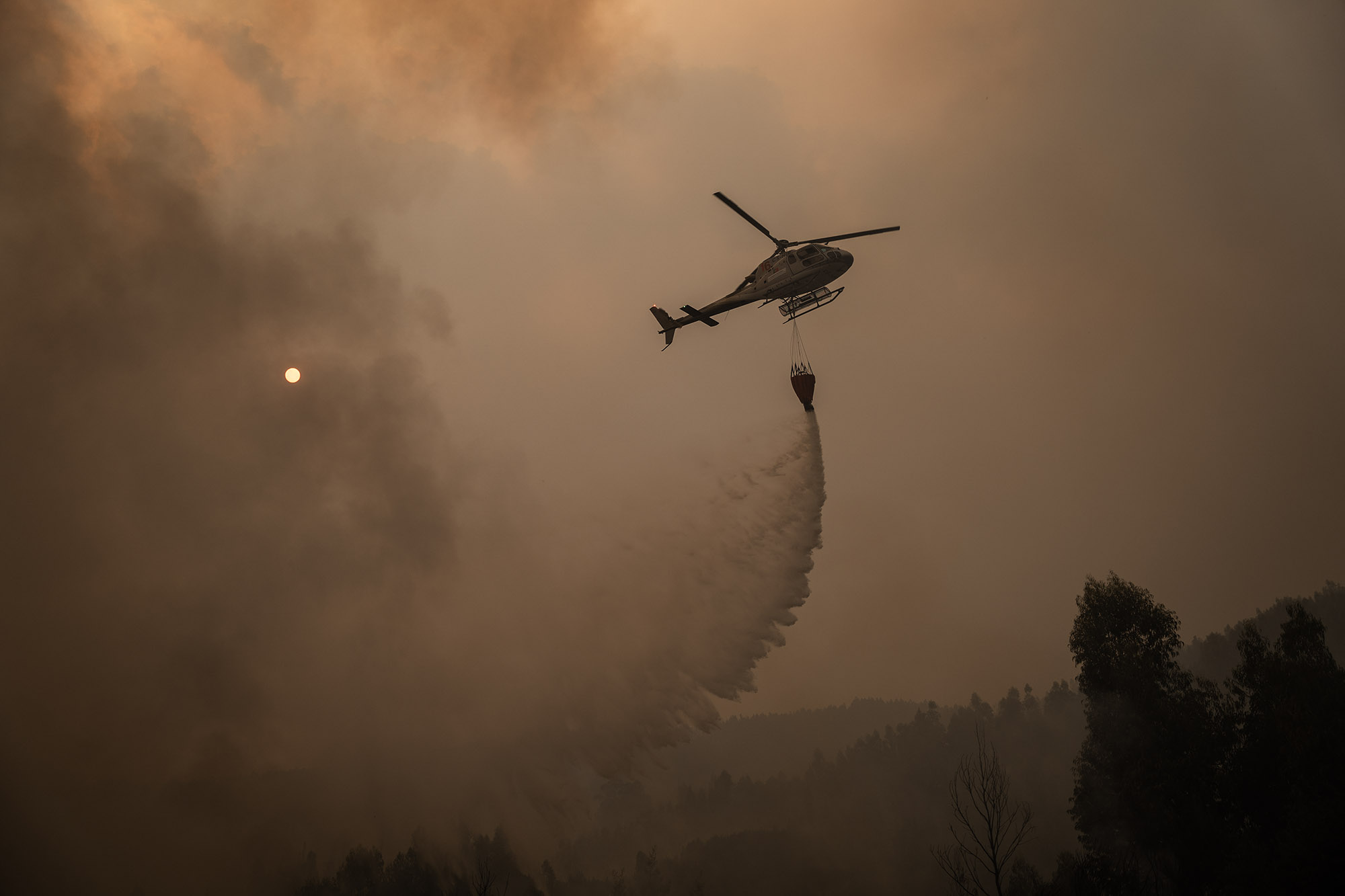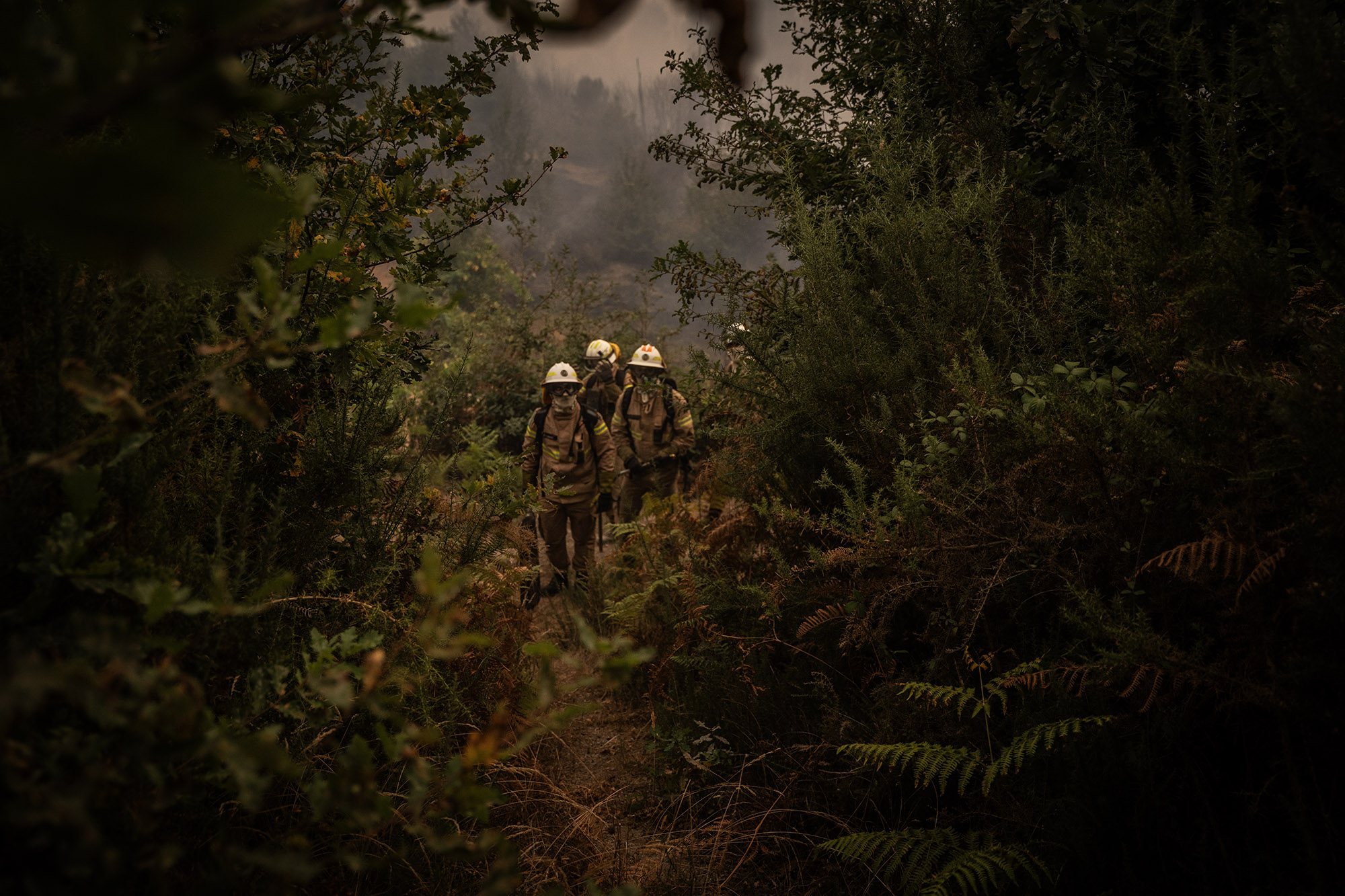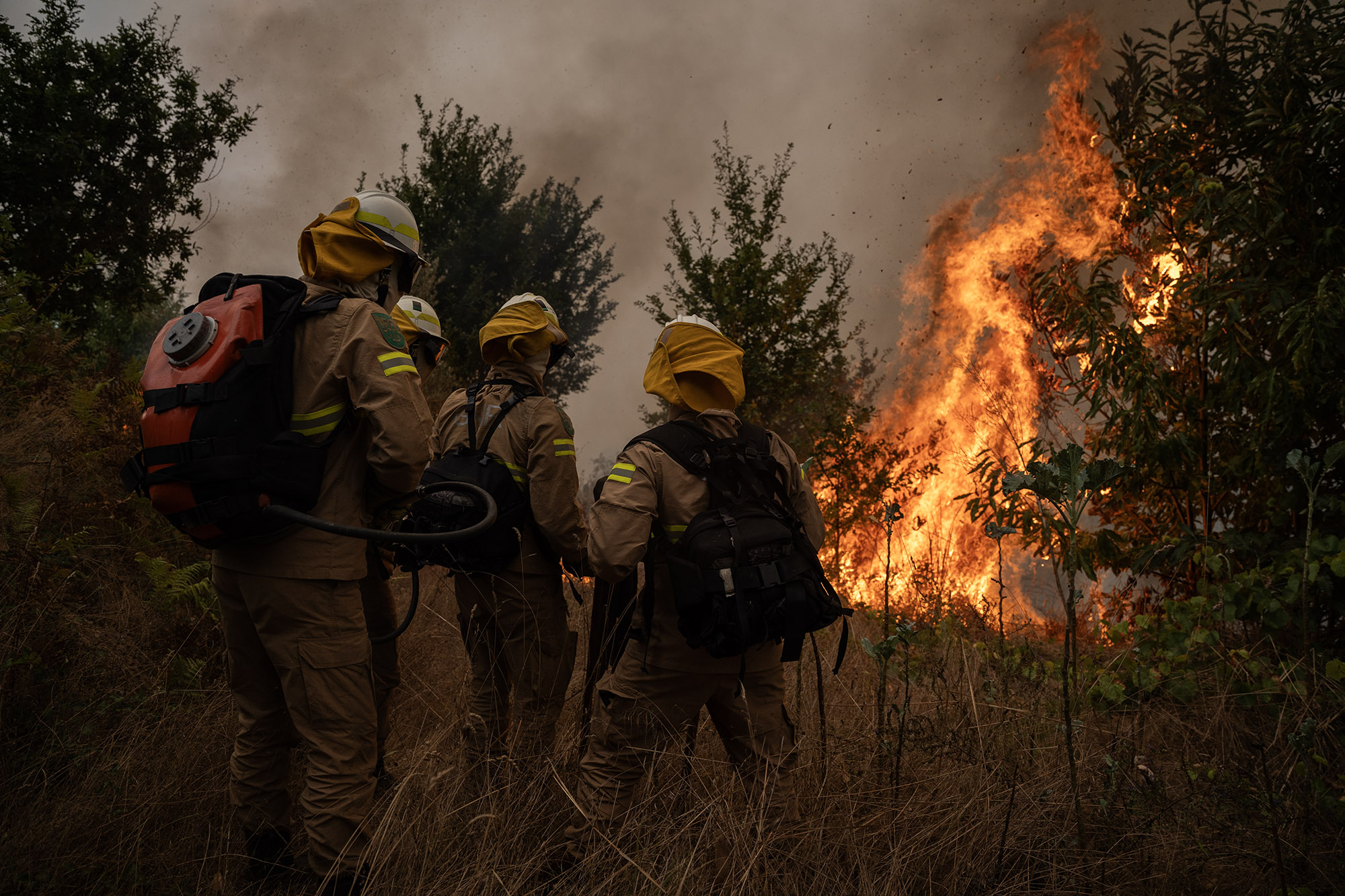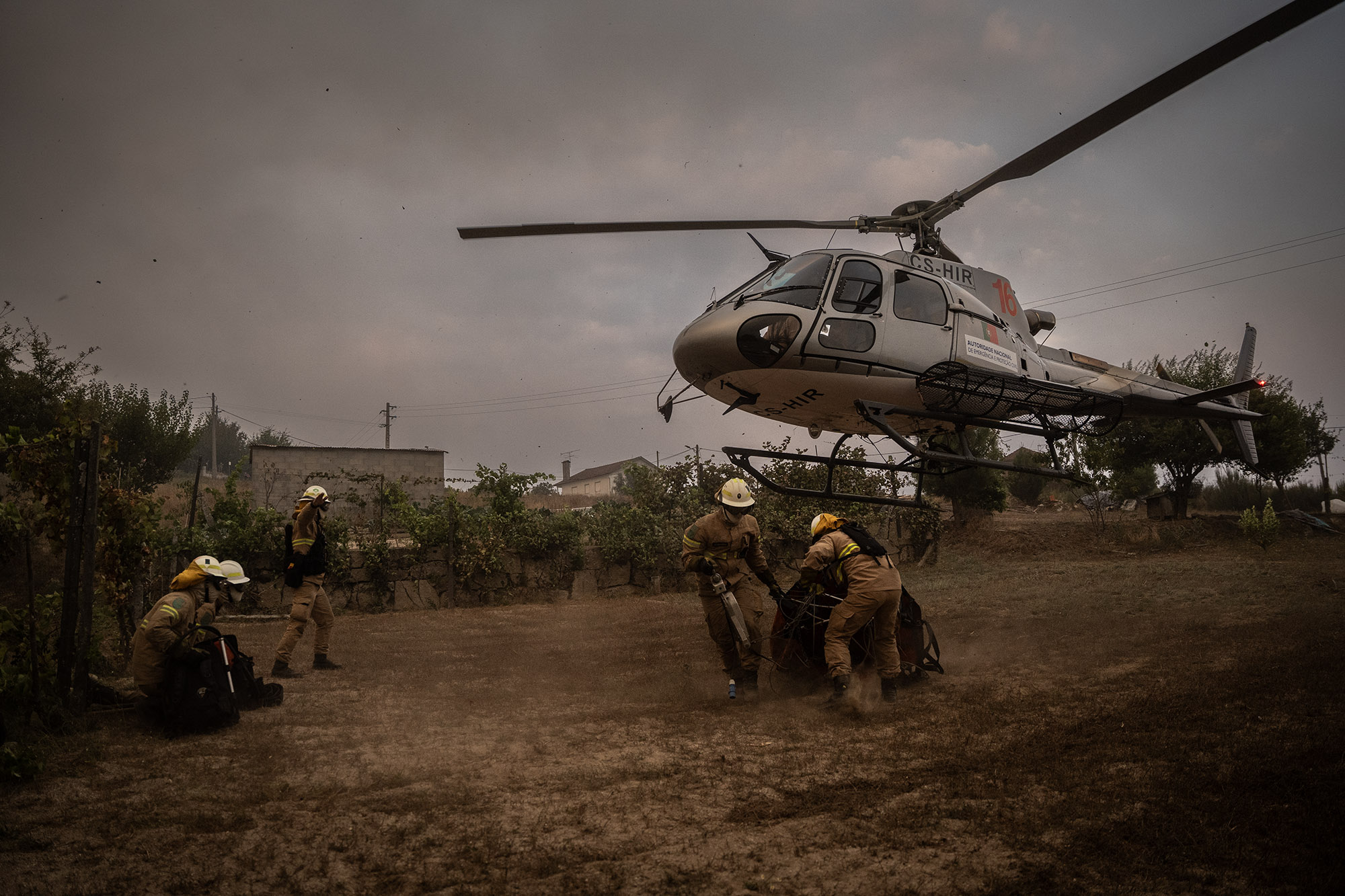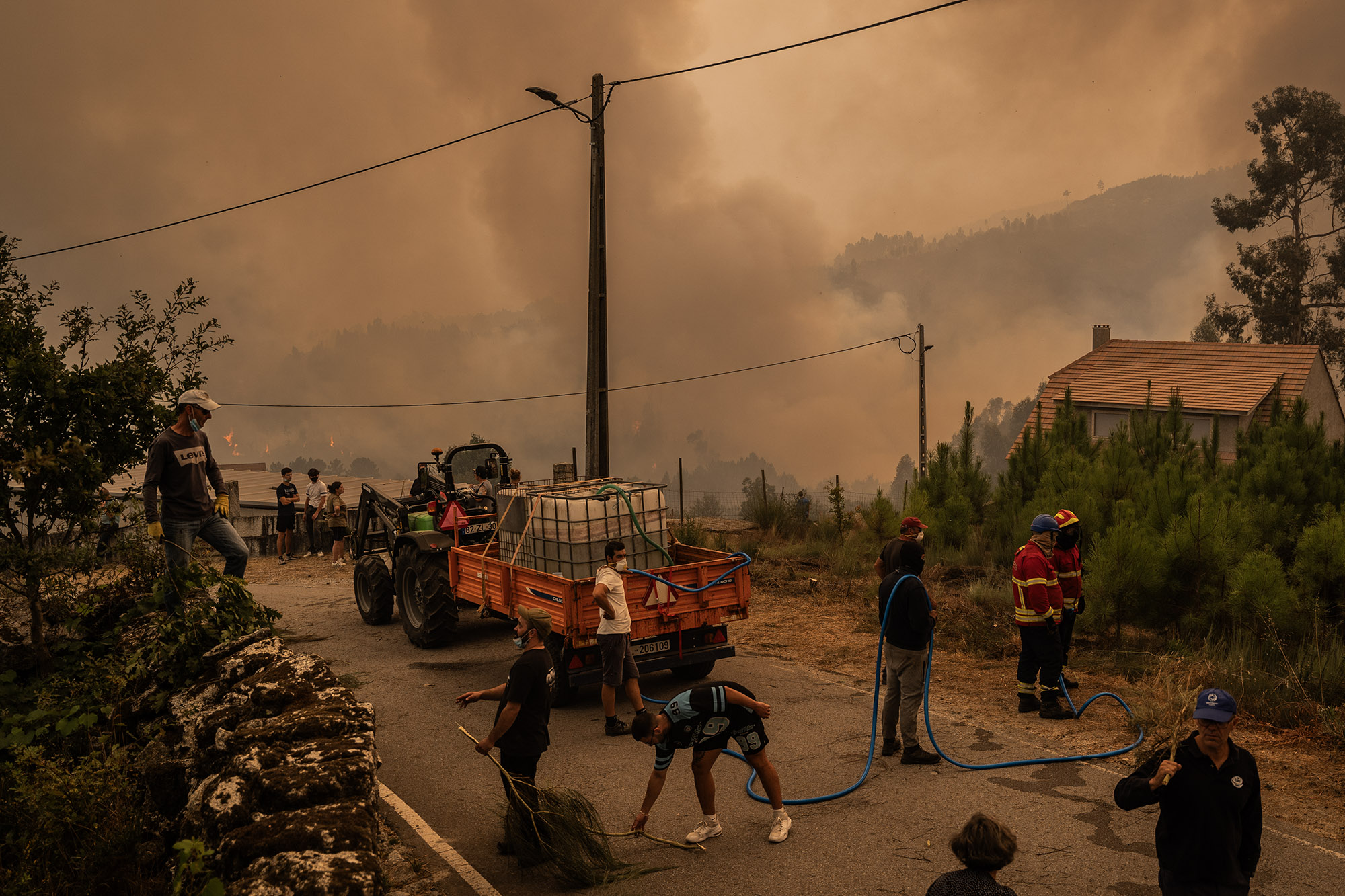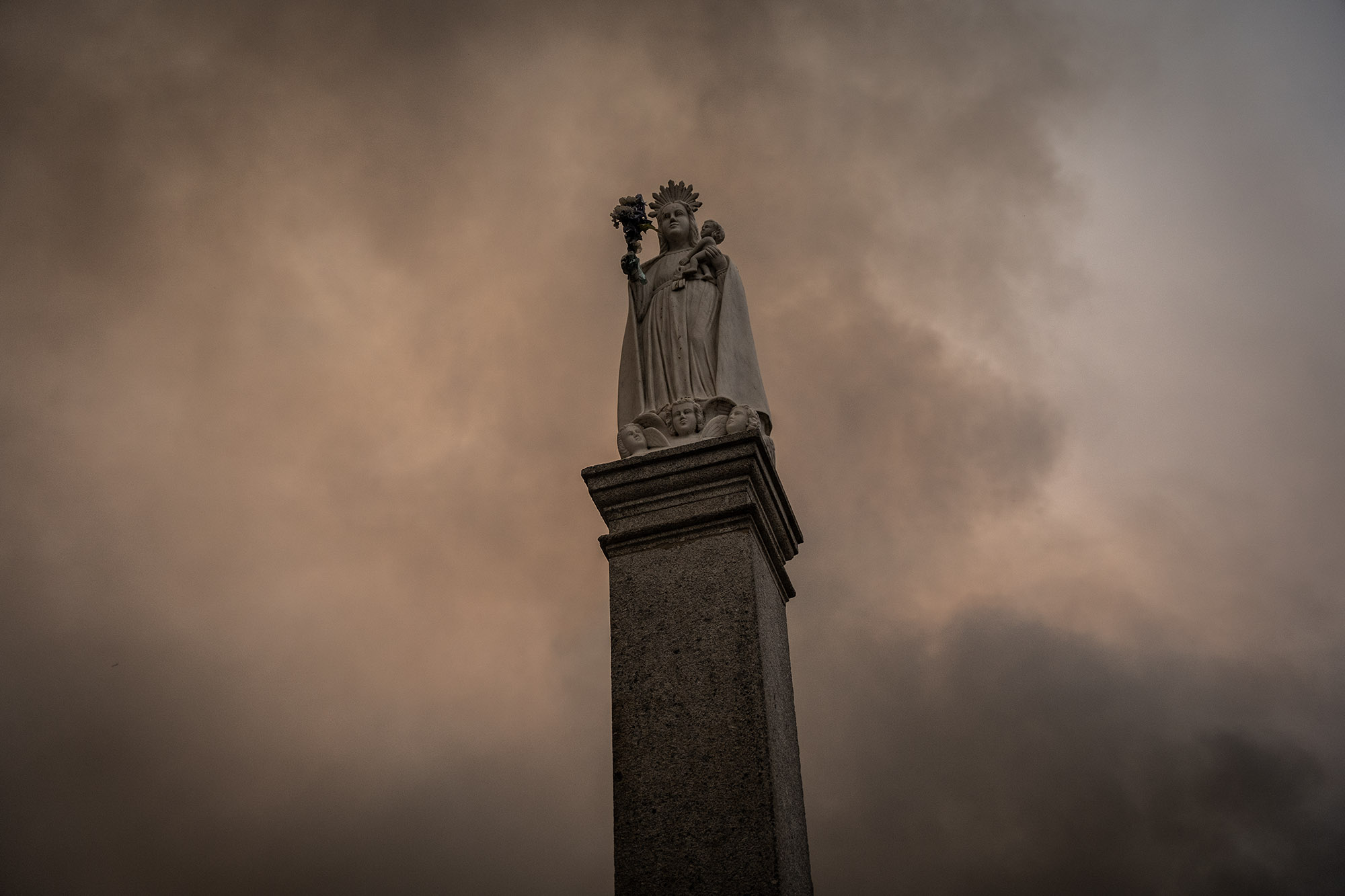Chronicle of a catastrophe foretold
Extreme wildfires return to northern Portugal
© Mikel Konate for Sonda Internacional
Project summary
#IIFFsondaMega Fires: Beyond Extinction
This project seeks to illustrate the circumstances surrounding the mega fires devastating Spain by generating a central guide to this phenomenon, presenting the new fire behavior and explaining its consequences on the land and the people. It will also compile the strategies for combating and living alongside them; unearth how ecosystems recover and utilize them; and share the solution projects mitigating their proliferation. As always, the project will tell these stories through photo, video and graphic resources as the main tool. Because seeing is essential to understanding.
Conversations #01: What is a mega fire?
Spanish Lapland
Fuelling a Mega Fire
Facing Fire
‘Lumes’ by Adra Pallón
Join our crowdfunding!
Take the opportunity to directly support in-depth journalism on the climate crisis
Donate
24 September 2024
A relatively quiet summer in the Iberian Peninsula in terms of extreme forest fires, may have lulled Portugal into a false sense of security. Despite an enduring and severe drought, the country enjoyed a summer with some of the fewest fires in recent decades. But that respite ended on September 14 as several blazes broke out almost simultaneously in the center and north of the country. The high temperatures together with the strong easterly “terral” wind, that arrived dry after crossing the peninsula, made the situation uncontrollable.
The affected regions, Oporto, Aveiro, and central Viseu, were among the areas we traveled through at the end of 2023 for our Mega Fires project. As I prepare the equipment and make the final arrangements before embarking on the journey back, the words of Professor Fantina Tedim come into my mind from an interview she gave us for the Fuelling a Mega Fire report: “The situation that was experienced in the fires of 2017 will certainly occur again in the future. Now, when? Next year? In 2, 10 or 15 years? No one really knows.” And there I was less than a year later, about to witness her prediction come true.
It is Tuesday, September 17th. I have been driving for several hours, the last few crossing through Portugal. When I pass Coimbra, smoke engulfs everything. The air is thick with ash, the sky is tinged yellow, and the sun can barely shine through. Though more subtle and silent, it is another consequence of the catastrophe unfolding: the environmental impact generated by large forest fires. According to data from the European Copernicus Satellite Observation Service, the amount of CO2 released into the atmosphere by the fires in Portugal is alarming: it is the highest level of carbon emissions for September in 22 years.
On Wednesday there are still more than a hundred active fires, several highways and national roads are closed, and dozens of towns have been evacuated. As I continue along the A24 towards Viseu, in the center of the country, the smell of smoke intensifies. The atmosphere becomes denser, almost tangible, and every breath serves as a reminder of the fragility of our environment. On both sides of the road, columns of smoke rise from a green blanket of eucalyptus and pine connecting village to village, town to town. What is technically called the ‘wildland-urban interface’ is the point where houses or inhabited areas meet forests, and it’s a critical factor in determining the level of wildfire danger. These areas, which may seem idyllic at first glance, are actually death traps. The houses and populations in these zones are not only at extreme risk but also greatly complicate firefighting operations.
I decide to leave the highway and take the national road. The shoulders are blackened, still smoking, road signs charred. I try to orient myself toward the columns of smoke I had seen from the highway. Fate leads me to Ribolhos, a small village of fewer than 300 inhabitants in the district of Viseu. It looks deserted. I climb the steep streets, heading further into the town. In the distance, I begin to see people. Some give me incredulous looks, though most don’t pay me any attention. The scene I come upon is heartbreaking: neighbors of all ages are desperately fighting to protect the village from the flames. All they have is a tractor pulling a couple of water tanks with a hose connected to a pump, with the help of a roaring generator. A volunteer firefighter is at the forefront; it’s human determination against the fury of nature.
The neighbors are either feeding or gathering meters of hose while the firefighter advances through the first pines, skillfully containing the flames that threaten to get away at any moment. A few meters behind him, they shout, telling him to direct the water in one direction or another.
When the fire begins to intensify from another flank, they sound the alarm, and everyone runs with determination to extinguish it. They go from one property to another, trying to protect their homes. Those not occupied with the improvised fire truck carry branches in their hands, beating them against the flames, trying to keep them at bay. The scene might seem chaotic, but amidst it, there is a silent coordination, a mutual understanding born from the necessity to protect themselves. I ask a resident about the firefighters: “Here we’re on our own, the firefighters are overwhelmed,” he replies.
Rita Silva, a young woman who has returned to Ribolhos to help her parents, tells me with tired eyes, “This whole area already burned in 2017, everything was destroyed. But now, as you can see, everything is burning (again). The vegetation keeps growing taller, and they can’t control it.” In Portugal, around 95% of the total forest area is privately owned (a percentage similar to that of the neighboring Spanish province of Galicia). Many of the private properties are less than 0.5 hectares in size, but despite this, their owners cannot, either physically or financially, manage them actively. In 2017, several fires shook the country. One occurred in June, in the Pedrógão Grande area; the second in October and was the one that affected this region of the country. Around half a million hectares were burned, and 109 people lost their lives. It was the deadliest year Portugal has ever known due to wildfires.
“This year, the fire is much worse, the intensity is much worse than in 2017,” Rita continues. Her father, Vasco Silva, approaches and adds in a broken voice: “Look at how it is, it’s a horrible thing. We’re trying to save the houses. A whole life spent earning money, to be able to get a home…”
As I descend one of the streets, a fire truck appears, joining the village defense. Shortly after arriving, it runs out of water, and the residents themselves fill the exhausted tank with their own supplies. Now, with firefighters and residents intermingled in the firefighting efforts, the situation improves substantially.
There is a wooded area close to the houses burning with a terrifying intensity, fuelled by dense vegetation. The crew advances with the truck in tow and tries to combat the fire, but it’s a losing battle. The flames exceed eight meters in height; I can hear the trees crackling and a furious hissing, as if the fire were protesting against the attempts to extinguish it. The water turns to steam before it can have any effect. The heat is so intense I can feel it several meters away.
When it seems that all is lost, a distant buzzing sound becomes increasingly louder. Through the dense smoke, I can see an AS350 B3 helicopter from the National Republican Guard, a military force similar to the Civil Guard in Spain. They fly over the area, the firefighters and their truck. They seem to understand the gravity of the situation and prepare to land in the small garden of a nearby house. The helicopter unit of the UEPS (Emergency Protection and Relief Unit) descends and places a ‘bambi’—a flexible red tank used to transport water for firefighting—under the helicopter. Once the manoeuvre is complete, the helicopter ascends, and the five members of the brigade, led by Sergeant Bruno F. Marques, walk toward the volunteer firefighters. They carry fire beaters and backpacks containing about 20 liters of water each.
After a brief conversation with the firefighters, the brigade begins working on extinguishing the fire. Marques coordinates via radio with the pilot the most effective strategy for making the water bombs. The dense smoke and the power lines running through the area significantly complicate plans. Again and again, the helicopter makes water drops on the affected area, while the brigade on the ground works determinedly to extinguish the remaining flames.
The forest is a tangle of eucalyptus, pine, ferns, and shrubs; the density is such that it is practically impassable. The brigade makes their way as best they can to reach the deeper hot spots. The firefighters continue to pour water from the fire truck tirelessly over the first pines, and a group of neighbors watch with relief as the situation is brought under control. They arrived at just the right moment: if it hadn’t been for the continuous relief provided by the aerial team, it would have been very difficult to stop the fire.
Once the situation seems under control, Marques orders the pilot to pick them up. While waiting for the helicopter to land, he tells me they’ve been providing support in critical areas for the last three days. Their shifts run from 8am to 8pm, without a break. We are still chatting when they receive new coordinates but they only have enough fuel for 20 minutes, so he radios that he is going to make a couple more landings and fly back to base. The residents of Ribolhos have been lucky. The fire, for the moment, is under control.
Between September 12 and 20, Portugal recorded about thirty large wildfires (those that devastate areas greater than 500 hectares) that affected just over 120,000 hectares. The fires took five lives and left 161 people injured, according to official figures. Three of the deceased were firefighters. As I prepare to leave, with the bitter taste of smoke still in my throat, I remember Rui Rosinha, a firefighter from Pedrógão Grande, who was left with tremendous physical and psychological scars from the large wildfires of 2017. There, he also lost his best friend, Assa, who too was a firefighter.
Rui and the others we spent time with in the Pedrógão area last year concluded the same as Rita and the neighbors of Ribolhos: everything is worse than when those 2017 fires broke out. Now, seeing the devastation around me, I understand better what they meant. Recovery after these disasters is a slow and painful process, often hampered by lack of resources, lack of vision and a lack of commitment to develop long-term strategic plans.
As I walk away from the smoke and flames, I ask myself: How many more disasters do we need? How many more people have to die? How many more large fires will we have to suffer before effective measures are taken to prevent and mitigate these disasters? I fear the answer lies in the smoke-filled sky and charred landscape I leave in the rear view mirror, silent testimonies to a lack of action in the face of a problem that, from what I have learned, can only get worse. As I drive home, the blackened landscape stretches out on both sides of the road, like a stark reminder of the urgency to act before it happens again.
There is no single miracle solution: the key to preventing large forest fires in the long term is to combine tools adapted to the needs of each territory. In Facing Fire we explore how in the public and private forests of the Iberian Peninsula, a series of local, national and international initiatives of intelligent territorial management are being carried out aimed at preventing these types of fires.


